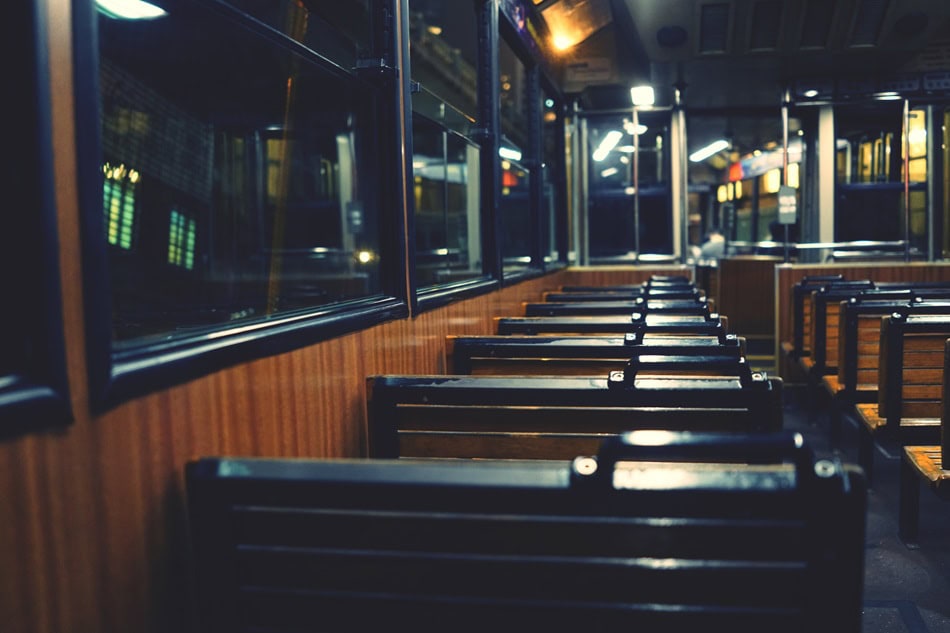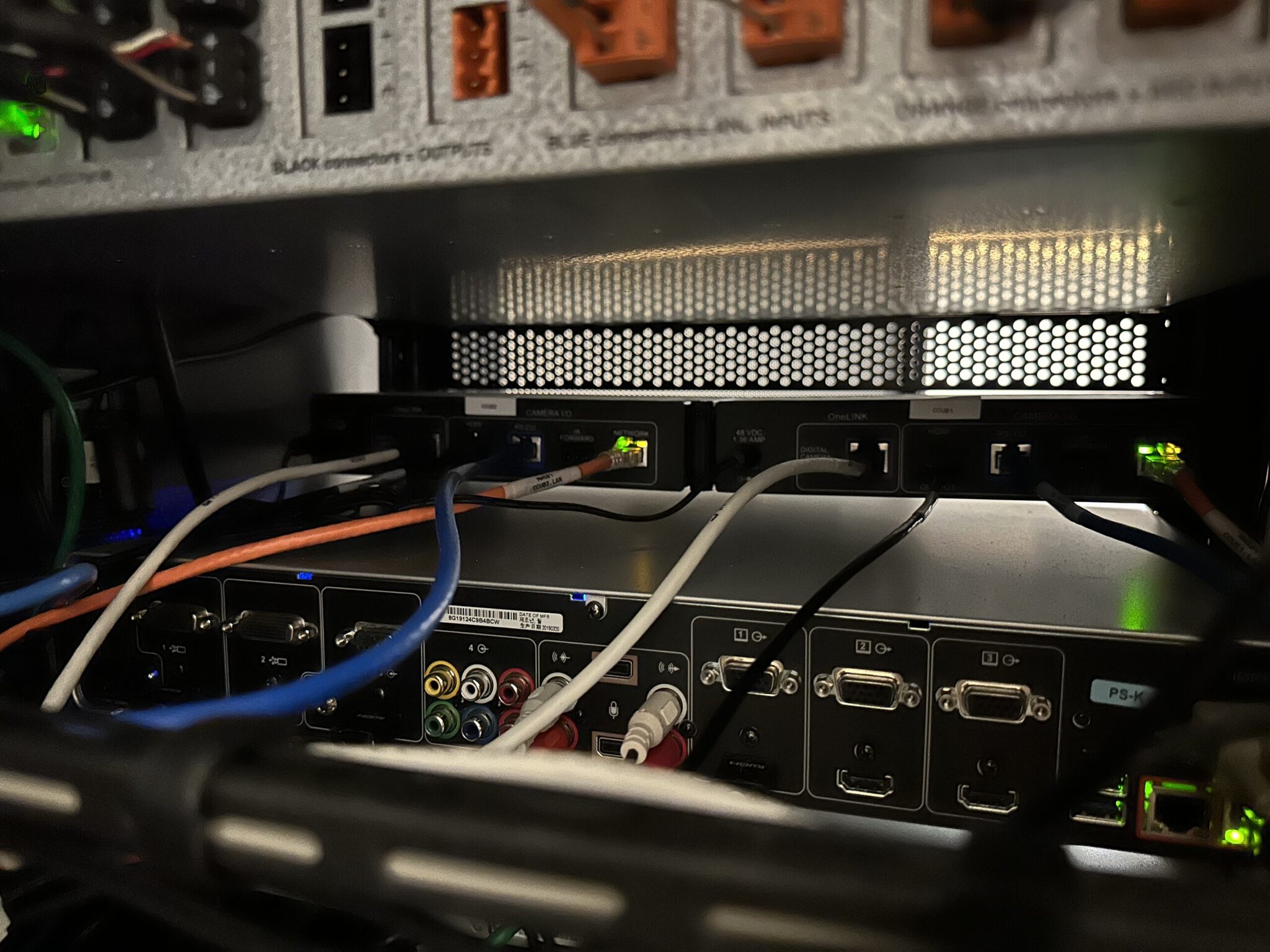A cheap sound system for restaurant seems like a budget win… until game night hits and the speakers crackle during the winning touchdown. In a restaurant or sports bar, bad audio undoubtedly annoys guests and, in consequence, costs you repeat business.
This is the real price of cutting corners on a sound system. Two venues can have the same crowd and the same menu; but only one will have people saying, “We’re coming back here next week.”
The Real Cost of a ‘Cheap’ Restaurant Sound System
A low-priced sound system may seem like a smart move at the start, but the real costs don’t show up on the receipt. They surface during peak hours: dropped audio, blown speakers, guests asking, “Can you turn it up?” or worse, walking out.
Understanding those hidden costs is the key to making the right investment.

Upfront savings vs. long-term costs
Cheap hardware saves money on day one. However, it often leads to compounding expenses, such as service calls, emergency replacements and lost revenue during outages.
Suddenly, what looks like a $5,000 win can quietly turn into a $15,000 problem when you factor in downtime and customer loss.
The most common financial hits:
- Paying double for reinstallation or upgrades
- Last-minute technician fees during major events
- Comping guests or issuing refunds during audio failures
Upgrades are inevitable. Paying for them twice is optional.
Where ‘affordable’ audio systems fail most often
Most budget systems fail not because they stop working but because they stop sounding acceptable. Common failure points include:
- Underpowered amplifiers that distort at higher volumes
- Consumer-grade mixers with no DSP or routing control
- Speakers placed without coverage planning; loud in one corner, silent in another
These are BASIC requirements for any space serving a paying audience.
How poor audio impacts the guest experience
Sound is one of the few things people notice more when it’s bad than when it’s good. They might not compliment your system, but they’ll definitely remember when the commentary cuts out during overtime.
- Rooms feel disjointed; energy in the bar, silence in the back dining area
- Guests strain to hear, fatigue sets in
- Staff constantly adjusts volume instead of focusing on service
Sports Bars Need More Than Background Music
A sports bar is a venue built around shared reactions. Background music systems can’t handle that. Game-day audio needs sharp timing, flexible control and coverage that keeps every seat in sync with the action.
When a touchdown happens, the room should erupt together, not row by row.

Game-day demands go beyond volume
It’s easy to assume that louder means better. It doesn’t. Sports audio needs power and precision. The commentary must be clean, the crowd noise rich and transitions smooth when switching between games or programs.
Cheap restaurant audio systems struggle because they lack:
- Fast source switching between games
- Zone control for bar vs. dining area
- Latency management to prevent audio echo across multiple screens
If one screen cheers before the others, the moment is ruined. Timing is everything.
Zone control keeps the whole venue in sync
Not everyone watches the game the same way. Some are locked into the main screen. Others are catching up over a meal. A real sports bar doesn’t blast everyone with the same feed, but rather directs sound based on intent.
A proper system allows:
- The main bar to carry full game audio
- Dining zones to run at lower levels with background commentary
- Patios with independent control, so staff aren’t juggling volumes table by table
Coverage makes or breaks the atmosphere
One of the biggest signs of a cheap install is uneven sound. One booth shakes from bass; another hears almost nothing. That creates dead zones – literal patches of silence in a supposedly “loud” bar.
Professional coverage accounts for:
- Seating density and ceiling height
- Speaker spacing and angle
- Ambient noise from fans, kitchen or street
In a manner of speaking, sound should travel with the room. If the game heats up, the room should feel it together.
The Hidden Costs You Don’t See on the Quote
A cheap sound system only looks inexpensive on paper. The real bill arrives later during service hours, playoff games and private events when the system fails to perform.
These costs never appear on the original invoice, but they chip away at revenue, staff morale and your brand’s reputation.

Emergency fixes cost more than proper planning
When audio cuts out during a Saturday rush, no one cares what the original system cost. Now you’re paying for last-minute technicians, rush fees and patchwork repairs just to get through the night.
Typical expenses that catch restaurant owners off guard:
- After-hours tech dispatch during big games
- Temporary equipment rentals after component failure
- Repeat visits because consumer-grade gear can’t be tuned or repaired on-site
What was meant to be “simple” becomes a recurring headache.
Staff becomes the technician
With a poorly designed system, it’s usually the staff who ends up paying the price. They ride the volume knob all night, unplug cables to “reset the sound” or get stuck explaining to guests why audio isn’t working.
Common operational strain:
- Bartenders adjusting audio instead of serving
- Managers apologizing for issues they can’t control
- Confusion over which TV or zone plays what feed
Guests don’t complain, they just don’t return.
Most customers won’t tell you why they left. They’ll finish their drinks, skip dessert and choose a different spot next time. Weak audio doesn’t always inspire online rants, but it quietly reshapes customer habits.
You’ll notice it in:
- Silent reviews where audio is never mentioned – but ambiance is “off”
- Shorter stays during major games
- Fewer group reservations for playoff nights
The AV Upgrade Window: Why September Beats December
Most bars lose business because they weren’t ready when the crowds showed up. The difference often boils down to timing. September gives you room to install, test, train and fine-tune. December leaves you hoping nothing goes wrong.
And hoping is not a strategy.

September gives you time to dial everything in
When you plan early, you’re asking the system to perform. The AV is installed, tuned and tested before the first kickoff. The staff isn’t guessing. They’re confident.
Early installs allow for:
- Full system calibration with real content
- Custom presets for game days vs. regular service
- Staff training without the pressure of a live crowd
By the time the season peaks, the system feels easy. That alone puts you ahead of half your competition.
December installs force you into damage control
A December upgrade is your rescue mission. Inventory is limited, technicians are booked and testing happens with paying customers in the room. Every issue reaches the crowd before it reaches the installer.
Late installs often mean:
- Unfinished trim work and exposed cables
- Temporary patches until after the holidays
- No time for fine-tuning or acoustic correction
When the first big night hits, your system is technically “installed” but nowhere near ready.
Who wins in January? The bar that started in September
Bar A and Bar B both have the same TVs, the same games, the same wings. But Bar A invested in timing – Bar B gambled with luck. By playoffs, one is packed beyond capacity. The other is explaining why audio keeps dropping between plays.
In this business, the season rewards whoever upgrades on time.
What a Proper Restaurant Sound System Includes (Without Overbuying)
A great restaurant or sports bar system isn’t necessarily built from brand names, but from balance. The goal isn’t loudness but in the 3 Cs, namely control, clarity and coverage.
If you understand the core components, you won’t fall for upsells or worse, cheap gear that won’t last a season.

Speakers chosen for the room, not the catalog
The right speaker has less to do with wattage and more to do with where it’s going. A ceiling unit, a wall mount or a weather-rated cabinet all serve different purposes. A good sound system design matches the speaker to the layout, not a sales sheet.
Key considerations:
- Coverage area – how far the sound carries evenly
- Mounting type – ceiling, wall, pendant, surface
- Environment – indoor, patio, bar, dining section
In essence, one well-placed speaker beats four poorly installed ones.
Amplifiers with room to breathe
This is one of the most common failure points in cheap sports bar sound systems. Undersized amps get pushed to the edge and distort, crackle or overheat. A proper install allows headroom (power in reserve) so sound stays clean even when the room gets loud.
What matters most:
- Power headroom (not just max wattage)
- Impedance matching between speakers and amps
- Protection features (limiters, thermal guards)
DSP and control for real-world use
A professional system includes a DSP or a digital signal processor. It’s considered the brain. It sets limits, balances frequencies, switches sources and creates presets like “Dinner Service” or “Game Day.”
Without it, staff ends up chasing volume knobs all night. DSP enables:
- Equalization tuned to the room
- Input switching without static
- Presets for different service modes
- Protection against speaker blowouts
It’s the difference between “turn it down!” and “sounds perfect. :)”
Audio source management built for busy nights
A sports bar or restaurant runs many sources. Live TV, wireless streaming music, DJ input, house mic, promo spots. Cheap systems require manual unplugging. A real system switches feeds instantly and silently, without staff intervention.
Common inputs to plan for:
- Cable/satellite feeds
- Restaurant music services
- House mic or paging
- Seasonal or event media
Losing audio between feeds is how you lose momentum in the room.
Acoustic treatment: the most overlooked advantage
You don’t need to treat the entire room. But a few panels in the right place can make dialogue intelligible and reduce echo so guests don’t raise their voices just to speak.
Benefits include:
- Quieter dining without killing energy
- Cleaner speech at lower volume
- Reduced echo and ear fatigue
Budgeting for Your Restaurant Audio System the Right Way
When it comes to restaurant and sports bar audio, the question isn’t “How cheap can I get it?”, it’s “How often do I want to pay for it?” A solid system isn’t always the most expensive. It’s the one you don’t have to replace during playoffs.
Typical budget ranges by venue size
Not every space needs a touring-grade rig. But every space needs reliable coverage. A small dining room might only need a few zones. A multi-room sports bar hosting fight nights needs far more power and control.
General investment ranges (equipment + install):
- Small restaurant or bar (1–2 zones): $8K – $15K
- Medium sports bar (3–4 zones, patio optional): $15K – $35K
- Large venue (multiple zones + video integration): $35K – $75K+
Where to spend vs. where to save
Sports bar owners often overspend on things guests barely notice and cut corners where guests absolutely notice. A well-balanced budget prioritizes the backbone: speakers, amplification and control system.
Spend your budget on:
- Speakers and amps (your core audio engine)
- DSP and control (for daily usability)
- Design and commissioning (so it works on Day 1)
Save on:
- Branded faceplates and luxury interface panels
- Over-specced hardware you’ll never use
- Early tech fads that won’t survive three software updates
Planning for phased upgrades
Smart AV design leaves room to grow. Start with strong coverage and infrastructure, then expand with displays, subwoofers or specialty zones later.
A solid phased plan includes:
- Reliable backbone (speakers, amps, DSP)
- Pre-wired zones for future expansion
- Upgrade path without demolition or downtime
A cheap system is a dead end. A professional system is a roadmap.
How to Vet an AV Integrator (So You Don’t Buy Twice)
A commercial sound system is only as fantastic as the team that installs it. Gear alone won’t save you if the integrator doesn’t design for your space, your flow or your business hours.
The wrong choice leads to callbacks, rewires and staff stuck troubleshooting. The right partner disappears into the background (because everything works).

Ask how they design
Any installer can list equipment. A real AV partner explains why it’s being used, how it fits your layout and how it will be tuned for service hours.
Good audiovisual integrators for restaurants will discuss:
- Coverage mapping and speaker placement
- SPL targets for dining vs. bar vs. patio
- Presets for different service modes (lunch, game day, late night)
If they can’t explain it in plain English, they probably won’t execute it well.
Look for commissioning
Placing speakers is one thing. Commissioning them is another. Commissioning means tuning EQ, balancing zones, setting limiters and testing under real conditions.
Signs of proper commissioning:
- They run test content, not just pink noise
- They walk the space and adjust levels live
- They ask about event types and volume peaks
Check their support plan before you sign
A job isn’t done when the rack is powered on. Ask who you call when something glitches during a UFC fight night at 9:30 p.m., because if the answer is voicemail, that doesn’t constitute support.
Key questions to ask:
- “Do you provide remote support or on-site visits?”
- “What’s your typical response time during peak hours?”
- “Do you train staff on system controls and presets?”
An integrator you never hear from again is worse than one you never hired.
FAQs: Restaurant & Sports Bar Sound Systems
How much does a proper restaurant sound system usually cost?
Most full systems range from $8,000 to $35,000, depending on size, zones and performance needs. A small dining space might sit on the lower end, while a multi-zone sports bar with outdoor seating will land higher. The key driver isn’t the brand but coverage, control and durability.
Can I reuse my existing speakers and just upgrade the rest?
If the speakers were originally commercial-grade and properly placed, we can integrate them with new amps or DSP. But if they’re box-store units meant for home use, it’s usually cheaper (and cleaner) to replace than to fight with mismatched gear.
Do I really need DSP or is that optional?
DSP is NOT optional in a restaurant or bar. It controls EQ, prevents distortion, sets volume limits and stores presets. Without it, someone ends up riding the volume knob every night (usually your GM or bartender).
What’s the difference between consumer and commercial audio system?
Consumer hardware is built for living rooms. Commercial hardware is built to run 12 hours a day, 7 days a week, at higher output, with better protection against failure. It’s not about “sound quality.” It’s about lifespan and control.
Can my restaurant staff control the speaker system easily?
They should. A well-designed system gives staff simple wall panels or touchscreen presets, i.e., “Lunch,” “Game Day,” “Last Call” instead of a mixing board and panic. If it needs a manual, it’s the wrong system.
How long does restaurant AV installation take?
Most installs take 2 to 5 days, depending on complexity and whether we’re working during closed hours or overnight. The more time we have before peak season, the more we can test, tune and train your team.
What about outdoor speakers and weather concerns?
Outdoor zones require weather-rated speaker system, secure mounting and amps set to handle distance and exposure. Sunlight, temperature and background noise all matter. A patio can’t just be “an extra zone.” It needs its own profile.
Work With an AV Team Built for Game Day.
A busy night doesn’t give you second chances. When the crowd is in, the game is on and the sound hits, that’s when your system proves what it’s worth. That’s why we build audio the way we do: not for showrooms, but for full houses.
If you’re ready to stop patching problems and start owning your atmosphere, we’re just as ready to get to work. We’ll walk your space, learn your flow and build a system you don’t have to babysit.
Let’s talk about your sound system before your next big game does it for you.
